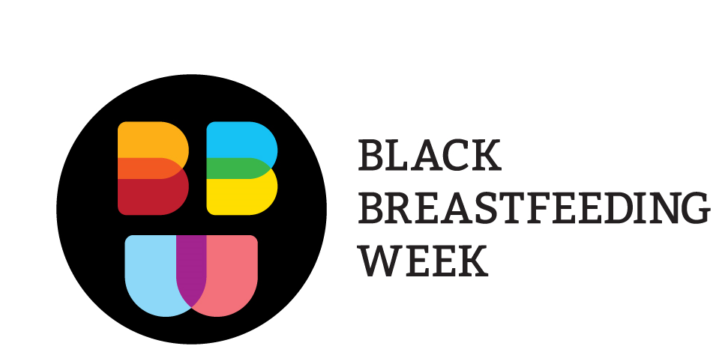 Founded in 2012 by three nationally recognized breastfeeding advocates, Black Breastfeeding Week is an annual, week-long multi-media campaign from August 25th-31st to raise awareness of the health benefits and personal empowerment of breastfeeding in the Black community. Despite the proven benefits of breastfeeding for mothers and babies, for over 40 years there has been a gaping disparity in breastfeeding rates between Whites and Blacks. The reasons are complex.
Founded in 2012 by three nationally recognized breastfeeding advocates, Black Breastfeeding Week is an annual, week-long multi-media campaign from August 25th-31st to raise awareness of the health benefits and personal empowerment of breastfeeding in the Black community. Despite the proven benefits of breastfeeding for mothers and babies, for over 40 years there has been a gaping disparity in breastfeeding rates between Whites and Blacks. The reasons are complex.
“There’s a sense of stigma,” said Ms. Crawford-Hemphill, the Cincinnati nursing administrator and lactation consultant, in a recent New York Times article. She added, “I’ve encountered black women who will say they aren’t a slave, or they don’t want the baby to be too attached to them or that no one else can help care for them if they’re being breast-fed.”
Like many organizations, the National Association of County and City Health Officials (NACCHO) in Washington, DC is working to change that narrative. In observance of the 5th Annual Black Breastfeeding Week, NACCHO's Senior Advisor Calondra Tibbs, MPH, describes the organization's work to improve breastfeeding rates among African-American and low-income women:

Ms. Tibbs, its National Breastfeeding Month. Why is breastfeeding a public health priority?
Calondra Tibbs: Breastfeeding is a critical public health issue, as it is the optimal source of infant nutrition, and has long-term health benefits for mom and baby. Breastfeeding protects babies from infections and decreases the risk of leukemia, sudden infant death syndrome and obesity. For mothers it reduces their risk of breast and ovarian cancer, diabetes and heart attacks.
Breastfeeding has many benefits, so why are there still disparities among black women and women living in poverty?
Calondra Tibbs: Disparities persist, as with many health outcomes, due to several barriers such as low availability and access to breastfeeding support, lack of family and community support, unaccommodating workplace and childcare environments, and aggressive marketing of infant formula.
Among infants born in 2014, black infants had the lowest breastfeeding rates of all reported race/ethnicity groups. Only 68% of black infants were ever breastfed as compared to 85.7% of white infants. Initiation rates for infants of mothers living in poverty was 73.2% among infants born in 2014.
Structural barriers disproportionately impact women of color and women living in poverty. For instance, birthing facilities using breastfeeding-friendly practices are less likely to be located in communities with high percentages of people of color or residents living in poverty.
In addition, the lack of federal legislation regarding paid family medical leave to support working families can impact decisions on returning to work. One-in-four women return to work within two weeks of delivery, and low-wage earners return to work sooner than higher wage earners. This limits the ability of women to establish breastfeeding prior to returning to work. And, although there are mandates for workplaces to support breastfeeding women, those working in the service industry are less likely to have adequate accommodations to support the pumping and storing of human milk.
Why has it been so important to increase breastfeeding rates among Black infants?
Calondra Tibbs: Although there have been great strides in breastfeeding, this persistent disparity in breastfeeding rates suggests that there are other factors that impact breastfeeding in the black community. The goal of our collective efforts should be to improve maternity care practices for black women; champion workplace and paid family medical leave policies; provide skilled and culturally-attuned breastfeeding support in communities; and engage the broader community to promote a culture of breastfeeding.
What is the local health department’s role in supporting breastfeeding?
Calondra Tibbs: Local health departments can play a vital role in supporting breastfeeding and ensuring access to breastfeeding support. Local health departments and their partners are uniquely positioned to address breastfeeding by supporting policy, systems, and environmental changes that enable women to breastfeed at optimal rates. These include encouraging breastfeeding-friendly workplace and hospital practices and expanding community-level breastfeeding support.
The Centers for Disease Control and Prevention, recognized the critical role local health departments have in supporting breastfeeding in underserved communities. This effort, led by the NACCHO, supported 72 projects in 32 states. Collectively, they provided over 90,000 one-to-one encounters and over 3,000 breastfeeding support groups. Grantees also instituted innovative practices to address structural barriers to breastfeeding by building workforce capacity, partnering with worksites and collaborating with hospitals and healthcare providers to ensure continuity of care for breastfeeding mothers. These efforts were positive steps towards increasing breastfeeding among black women and women living in poverty.
About NACCHO
The National Association of County and City Health Officials (NACCHO) represents the nation’s nearly 3,000 local governmental health departments. These city, county, metropolitan, district, and tribal departments work every day to protect and promote health and well-being for all people in their communities. For more information about NACCHO, please visit www.naccho.org









